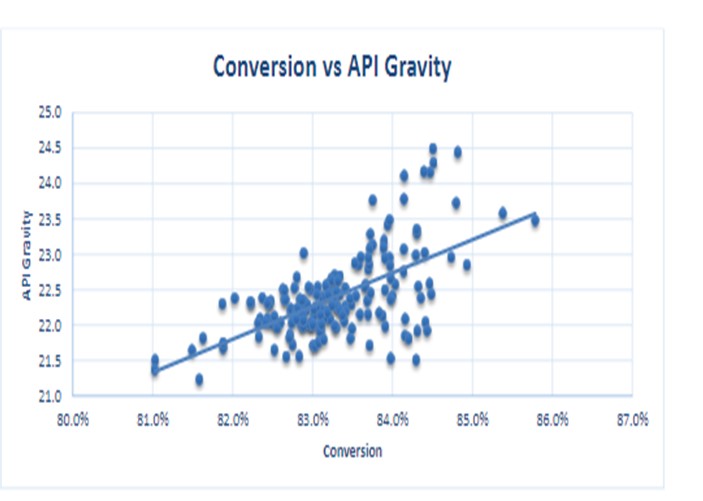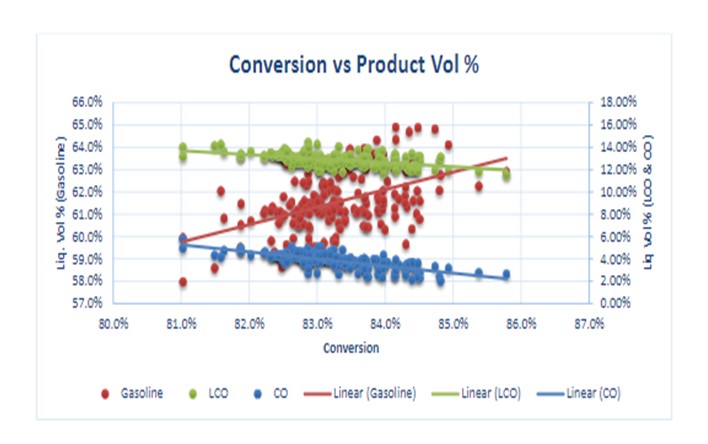Question 66: In your experience, how does changing the feed cutpoints impact FCC conversion and product yields? How does the LP (liquefied petroleum) determine where to make these cutpoints?
ZACH BEZON [United Refining Company (URC)]
Deeper cuts will not have as high a conversion as will lighter cuts. For example, an FCC charge API gravity of 22 may have a conversion of 83%, while a lighter gravity of 23 will show conversion one point higher at 84%. See the chart shown below.

The additional conversion from a lighter feed is found in the gasoline fraction, as can be seen in the next chart.

The utilization of LP is challenging for optimization of this system and is based on the entire economics of the refinery. Our LP is not sophisticated enough to tell us exactly where to make cutpoint changes to optimize profitability; instead, it tells us what mode to run in: a mode favoring gasoline or distillate. The quickest adjustment to be made is done by under/overcutting naphtha and LCO in the FCC fractionator.Further adjustments can then be made on upstream units.The crude and vacuum units may have cutpointchanges to further push production towards either product.For example, if gasoline is favored, the furnace oil endpointmay be increased 10°F to send more diesel range material to the FCC with the goal of cracking moregasoline.